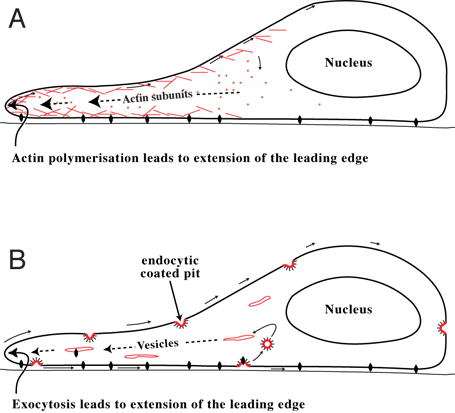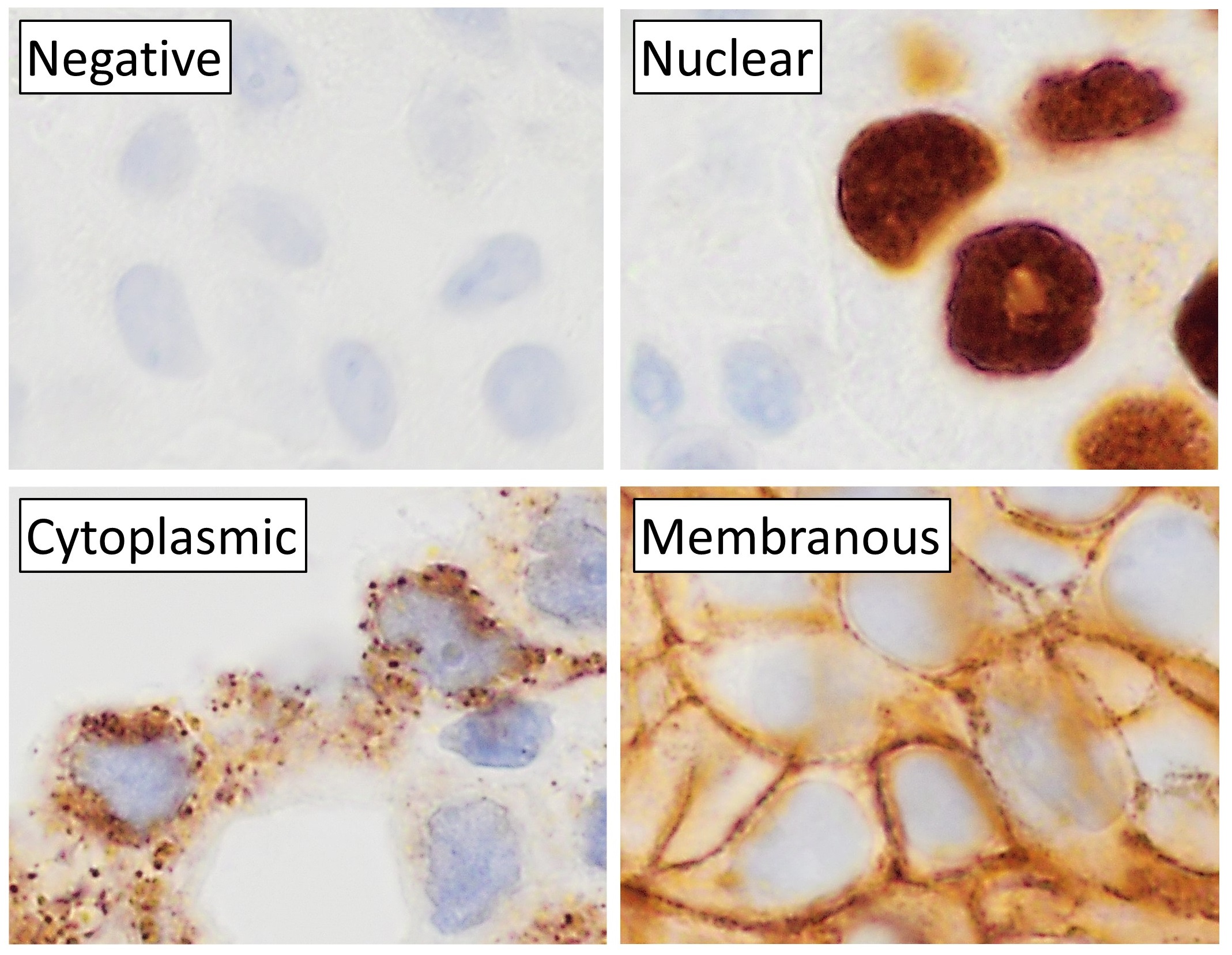|
Transmembrane Glycoprotein NMB
Transmembrane glycoprotein NMB is a protein that in humans is encoded by the ''GPNMB'' gene. Two transcript variants encoding 560 and 572 amino acid isoforms have been characterized for this gene in humans. The mouse and rat orthologues of GPNMB are known as DC-HIL and Osteoactivin (OA), respectively. GPNMB is a type I transmembrane glycoprotein which shows homology to the pmel17 precursor, a melanocyte-specific protein. GPNMB has been reported to be expressed in various cell types, including: melanocytes, osteoclasts, osteoblasts, dendritic cells, and it is overexpressed in various cancer types. In melanocytic cells and osteoclasts the GPNMB gene is transcriptionally regulated by microphthalmia-associated transcription factor. Function In osteoblast progenitor cells, Osteoactivin works as a positive regulator of osteoblast differentiation during later stages of matrix maturation and mineralization that is mediated at least in part by bone morphogenetic protein 2 in a SMAD1 d ... [...More Info...] [...Related Items...] OR: [Wikipedia] [Google] [Baidu] |
Protein
Proteins are large biomolecules and macromolecules that comprise one or more long chains of amino acid residue (biochemistry), residues. Proteins perform a vast array of functions within organisms, including Enzyme catalysis, catalysing metabolic reactions, DNA replication, Cell signaling, responding to stimuli, providing Cytoskeleton, structure to cells and Fibrous protein, organisms, and Intracellular transport, transporting molecules from one location to another. Proteins differ from one another primarily in their sequence of amino acids, which is dictated by the Nucleic acid sequence, nucleotide sequence of their genes, and which usually results in protein folding into a specific Protein structure, 3D structure that determines its activity. A linear chain of amino acid residues is called a polypeptide. A protein contains at least one long polypeptide. Short polypeptides, containing less than 20–30 residues, are rarely considered to be proteins and are commonly called pep ... [...More Info...] [...Related Items...] OR: [Wikipedia] [Google] [Baidu] |
Glioma
A glioma is a type of primary tumor that starts in the glial cells of the brain or spinal cord. They are malignant but some are extremely slow to develop. Gliomas comprise about 30% of all brain and central nervous system tumors and 80% of all malignant brain tumors. They are a few common types that include astrocytoma (cancer of astrocytes), glioblastoma (an aggressive form of astrocytoma), oligodendroglioma (cancer of oligodendrocytes), and ependymoma (cancer of ependymal cells). Signs and symptoms Symptoms of gliomas depend on the part of the central nervous system (CNS) that is affected. A brain glioma can cause headaches, vomiting, memory loss, seizures, vision problems, speech difficulties, and cranial nerve disorders as a result of increased intracranial pressure. Cognitive impairments such as vision loss arise in glioma patients when a tumor arises in or around their optic nerve. Spinal cord gliomas can cause pain, weakness, or numbness in the extremities ... [...More Info...] [...Related Items...] OR: [Wikipedia] [Google] [Baidu] |
MMAE
Monomethyl auristatin E (MMAE) is a synthetic antineoplastic agent. Because of its toxicity, it cannot be used as a drug itself; instead, it is linked to a monoclonal antibody (MAB) which directs it to the cancer cells. In International Nonproprietary Names for MMAE-MAB-conjugates, the name vedotin refers to MMAE plus its linking structure to the antibody. It is a potent antimitotic drug derived from peptides occurring in marine shell-less mollusc '' Dolabella auricularia'' called dolastatins which show potent activity in preclinical studies, both ''in vitro'' and ''in vivo'', against a range of lymphomas, leukemia and solid tumors. These drugs show potency of up to 200 times that of vinblastine, another antimitotic drug used for Hodgkin lymphoma as well as other types of cancer. MMAE is actually desmethyl-auristatin E; that is, the N-terminal amino group has only one methyl substituent instead of two as in auristatin E itself. Mechanism of action Monomethyl auristatin E is an ... [...More Info...] [...Related Items...] OR: [Wikipedia] [Google] [Baidu] |
Glembatumumab Vedotin
Glembatumumab vedotin (also known as CDX-011 and CR011-vcMMAE) is an antibody-drug conjugate (ADC) that targets cancer cells expressing transmembrane glycoprotein NMB (GPNMB). In May 2010, the U.S Food and Drug Administration, FDA granted FDA Fast Track Development Program, Fast Track designation to CDX-011 for the treatment of advanced, refractory, or resistant GPNMB-expressing breast cancer. Structure and mechanism The fully human IgG2 monoclonal antibody glembatumumab (CR011) is linked to monomethyl auristatin E (MMAE). It uses a valine-citrulline enzyme-cleavable linker. The linkage is stable in the bloodstream. The antibody binds to GPNMB on the cancer cells, the ADC is internalised, the linkage is broken and MMAE is released to kill the cell. In preclinical studies glembatumumab vedotin was capable of killing GPNMB expressing melanoma and breast cancer cells ''in vitro'' and inducing partial or complete regression of GPNMB-expressing tumors in mouse models. Development ... [...More Info...] [...Related Items...] OR: [Wikipedia] [Google] [Baidu] |
Metastasis
Metastasis is a pathogenic agent's spreading from an initial or primary site to a different or secondary site within the host's body; the term is typically used when referring to metastasis by a cancerous tumor. The newly pathological sites, then, are metastases (mets). It is generally distinguished from cancer invasion, which is the direct extension and penetration by cancer cells into neighboring tissues. Cancer occurs after cells are genetically altered to proliferate rapidly and indefinitely. This uncontrolled proliferation by mitosis produces a primary tumor, primary tumour heterogeneity, heterogeneic tumour. The cells which constitute the tumor eventually undergo metaplasia, followed by dysplasia then anaplasia, resulting in a Malignancy, malignant phenotype. This malignancy allows for invasion into the circulation, followed by invasion to a second site for tumorigenesis. Some cancer cells, known as circulating tumor cells (CTCs), are able to penetrate the walls of lymp ... [...More Info...] [...Related Items...] OR: [Wikipedia] [Google] [Baidu] |
Cell Migration
Cell migration is a central process in the development and maintenance of multicellular organisms. Tissue formation during embryogenesis, embryonic development, wound healing and immune system, immune responses all require the orchestrated movement of cells in particular directions to specific locations. Cells often migrate in response to specific external signals, including chemotaxis, chemical signals and mechanotaxis, mechanical signals. Errors during this process have serious consequences, including intellectual disability, cardiovascular disease, vascular disease, tumor, tumor formation and metastasis. An understanding of the mechanism by which cells migrate may lead to the development of novel therapeutic strategies for controlling, for example, invasive tumour cells. Due to the highly viscous environment (low Reynolds number), cells need to continuously produce forces in order to move. Cells achieve active movement by very different mechanisms. Many less complex prokaryotic ... [...More Info...] [...Related Items...] OR: [Wikipedia] [Google] [Baidu] |
Triple Negative Breast Cancer
Triple-negative breast cancer (TNBC) is any breast cancer that either lacks or shows low levels of estrogen receptor (ER), progesterone receptor (PR) and human epidermal growth factor receptor 2 (HER2) overexpression and/or gene amplification (i.e. the tumor is negative on all three tests giving the name ''triple-negative''). Triple-negative is sometimes used as a surrogate term for basal-like. Triple-negative breast cancer comprises 15–20% of all breast cancer cases and affects more young women or women with a mutation in the BRCA1 gene than other breast cancers. Triple-negative breast cancers comprise a very heterogeneous group of cancers. TNBC is the most challenging breast cancer type to treat. Hormone therapy that is used for other breast cancers does not work for TNBC. In its early stages, the cancer is typically treated through surgery, radiation and chemotherapy. In later stages where surgery is not possible or the cancer has spread from the initial localised area, tr ... [...More Info...] [...Related Items...] OR: [Wikipedia] [Google] [Baidu] |
Epithelium
Epithelium or epithelial tissue is a thin, continuous, protective layer of cells with little extracellular matrix. An example is the epidermis, the outermost layer of the skin. Epithelial ( mesothelial) tissues line the outer surfaces of many internal organs, the corresponding inner surfaces of body cavities, and the inner surfaces of blood vessels. Epithelial tissue is one of the four basic types of animal tissue, along with connective tissue, muscle tissue and nervous tissue. These tissues also lack blood or lymph supply. The tissue is supplied by nerves. There are three principal shapes of epithelial cell: squamous (scaly), columnar, and cuboidal. These can be arranged in a singular layer of cells as simple epithelium, either simple squamous, simple columnar, or simple cuboidal, or in layers of two or more cells deep as stratified (layered), or ''compound'', either squamous, columnar or cuboidal. In some tissues, a layer of columnar cells may appear to be stratified d ... [...More Info...] [...Related Items...] OR: [Wikipedia] [Google] [Baidu] |
Stroma (animal Tissue)
Stroma () is the part of a tissue or organ with a structural or connective role. It is made up of all the parts without specific functions of the organ - for example, connective tissue, blood vessels, ducts, etc. The other part, the parenchyma, consists of the cells that perform the function of the tissue or organ. There are multiple ways of classifying tissues: one classification scheme is based on tissue functions and another analyzes their cellular components. Stromal tissue falls into the "functional" class that contributes to the body's support and movement. The cells which make up stroma tissues serve as a matrix in which the other cells are embedded. Stroma is made of various types of stromal cells. Examples of stroma include: * stroma of iris * stroma of cornea * stroma of ovary * stroma of thyroid gland * stroma of thymus * stroma of bone marrow * lymph node stromal cell * multipotent stromal cell (mesenchymal stem cell) Structure Stromal connective tissues a ... [...More Info...] [...Related Items...] OR: [Wikipedia] [Google] [Baidu] |
Tumors
A neoplasm () is a type of abnormal and excessive growth of tissue. The process that occurs to form or produce a neoplasm is called neoplasia. The growth of a neoplasm is uncoordinated with that of the normal surrounding tissue, and persists in growing abnormally, even if the original trigger is removed. This abnormal growth usually forms a mass, which may be called a tumour or tumor.'' ICD-10 classifies neoplasms into four main groups: benign neoplasms, in situ neoplasms, malignant neoplasms, and neoplasms of uncertain or unknown behavior. Malignant neoplasms are also simply known as cancers and are the focus of oncology. Prior to the abnormal growth of tissue, such as neoplasia, cells often undergo an abnormal pattern of growth, such as metaplasia or dysplasia. However, metaplasia or dysplasia does not always progress to neoplasia and can occur in other conditions as well. The word neoplasm is from Ancient Greek 'new' and 'formation, creation'. Types A neoplas ... [...More Info...] [...Related Items...] OR: [Wikipedia] [Google] [Baidu] |
Immunohistochemical
Immunohistochemistry is a form of immunostaining. It involves the process of selectively identifying antigens in cells and tissue, by exploiting the principle of antibodies binding specifically to antigens in biological tissues. Albert Hewett Coons, Ernest Berliner, Norman Jones and Hugh J Creech was the first to develop immunofluorescence in 1941. This led to the later development of immunohistochemistry. Immunohistochemical staining is widely used in the diagnosis of abnormal cells such as those found in cancerous tumors. In some cancer cells certain tumor antigens are expressed which make it possible to detect. Immunohistochemistry is also widely used in basic research, to understand the distribution and localization of biomarkers and differentially expressed proteins in different parts of a biological tissue. Sample preparation Immunohistochemistry can be performed on tissue that has been fixed and embedded in paraffin, but also cryopreservated (frozen) tissue. Based o ... [...More Info...] [...Related Items...] OR: [Wikipedia] [Google] [Baidu] |





